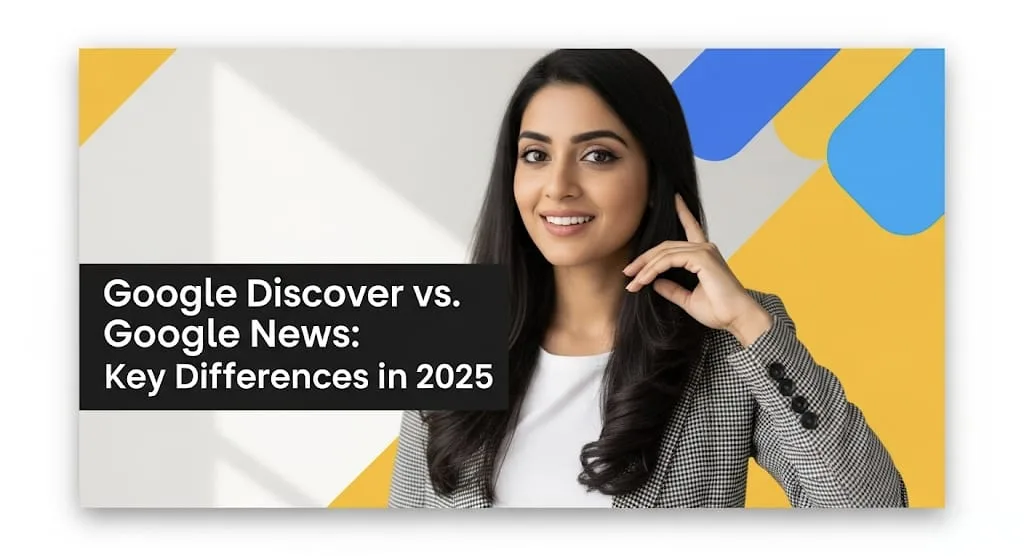In 2025, Google continues to dominate the digital landscape with its powerful content discovery tools: Google Discover and Google News. While both platforms help users find information, they serve very different purposes. Understanding their key differences can help you optimize your content strategy and stay ahead in the ever-evolving world of SEO.
Let’s break down how these two platforms work in 2025, their unique features, and how you can leverage them effectively.
What Is Google Discover?
Google Discover is a personalized content feed that appears on the Google mobile app and mobile homepage. Unlike traditional search, Discover delivers content based on user interests, past searches, and browsing behavior.
Key Features of Google Discover in 2025:
- AI-driven recommendations: Google’s advanced AI predicts what users want to see before they search.
- Visual-heavy format: Articles with high-quality images and videos perform better.
- Evergreen and trending content: Discover surfaces both timely news and long-lasting informative pieces.
- No direct search intent: Users don’t type queries—content is pushed to them automatically.
For publishers, ranking on Discover requires engaging headlines, strong visuals, and authoritative content that aligns with user interests.
What Is Google News?
Google News, on the other hand, is a dedicated news aggregator that curates the latest stories from trusted sources. It focuses on fresh, factual, and breaking news rather than personalized recommendations.
Key Features of Google News in 2025:
- Real-time updates: Prioritizes breaking news and recent developments.
- Strict publisher guidelines: Only verified sources with strong E-E-A-T (Experience, Expertise, Authoritativeness, Trustworthiness) rank well.
- Structured categories: Users can browse topics like Technology, Politics, or Health easily.
- Search-based: Unlike Discover, users often visit Google News to actively seek news.
Publishers aiming for Google News must focus on accuracy, speed, and credibility to maintain visibility.
Google Discover vs. Google News: 5 Major Differences in 2025
1. Content Discovery Method
- Discover: Content is algorithmically recommended based on user behavior.
- News: Content is curated from publishers and organized by relevance and timeliness.
2. User Intent
- Discover: Passive consumption—users scroll through a personalized feed.
- News: Active consumption—users search for specific news topics.
3. Content Lifespan
- Discover: Supports evergreen content (e.g., “How to Start a Blog”) alongside trending topics.
- News: Focuses on short-lived, time-sensitive stories (e.g., election results).
4. Ranking Factors
- Discover: Prioritizes engagement metrics (click-through rates, dwell time).
- News: Prioritizes freshness, authority, and factual accuracy.
5. Visual vs. Text-Based
- Discover: Highly visual—images and videos significantly impact performance.
- News: Text-heavy, though multimedia elements still enhance credibility.
How to Optimize for Both Platforms in 2025
To maximize reach, publishers should tailor content for both Discover and News:
For Google Discover:
- Use eye-catching visuals (high-resolution images, infographics).
- Write compelling headlines that spark curiosity.
- Focus on user intent—answer questions before they’re asked.
For Google News:
- Publish fast, accurate news updates.
- Follow Google’s Publisher Guidelines strictly.
- Build authority through expert contributions and citations.
Which One Should You Focus On?
The choice depends on your content strategy:
- Blogs, lifestyle sites, and evergreen content creators benefit more from Discover.
- News outlets, journalists, and real-time reporters should prioritize Google News.
In 2025, the best approach is often a balanced strategy—optimizing for both platforms to capture different audiences.
Final Thoughts
As Google refines its algorithms, understanding the differences between Discover and News becomes crucial for digital success. By aligning your content with each platform’s strengths, you can boost visibility, engagement, and credibility in 2025.
Stay updated with Google’s latest changes, experiment with formats, and always prioritize E-E-A-T principles to maintain a competitive edge.
Disclaimer: This article is based on independent research and analysis. For the latest updates, refer to Google’s official guidelines.

